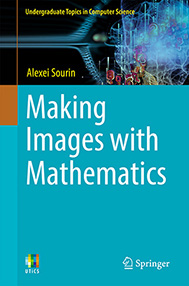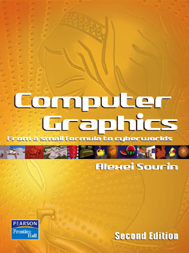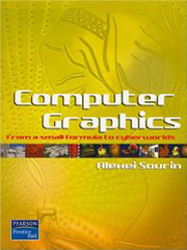
For all my courses the main idea is to show how ‘small formulae’ like geometric DNAs can be used for constituting complex shapes and motions, and how even a common PC can be used for solving advanced computer graphics problems. The courses assume case studies of the commonly available graphics software (OpenGL, POV-Ray, VRML, X3D), which let the students apply theoretical principles into practice without requesting expensive hardware and software solutions. On the other hand, the courses overview the most recent achievements in the respective areas and assume extensive use of video and multi-media presentations.
Last updated on May 10, 2021
Computer
Graphics and Visualization
This course aims to introduce methods for visualizing data, especially in cases where simple plots and diagrams are insufficient. Information visualization and graphics rendering of abstract data involves various mathematical models, and has become important in modern science and technology. It has applications across many disciplines including interior and architectural designs, as well as engineering software systems that employ graphical presentations as part of their user interfaces. The students in this course will be immersed into “visual mathematics”, i.e. they will learn how to see geometry and colors beyond mathematical formulas and how to represent geometric shapes and motions by analytic functions and algorithmic procedures. They will develop spatial visualization skills which will permit them to perform 3D rotations and other transformations of geometric objects. They will also learn how a common personal computer, freeware and de-facto standard software can be used for solving complex computer graphics problems. The course requires knowledge of engineering math and analytic geometry.
Click to view the book's companion webpage
Virtual
Reality
This course provides an introduction to the current state-of-the-art in virtual reality, virtual reality technologies and applications, and introduces the VR software tools commonly available for building VR applications. The course does not require using sophisticated software tools and hardware devices which are only available in special labs. Instead, it teaches how to make content with raw mathematics using common personal computers. Students will learn how to see geometry beyond mathematical formulas and how to represent geometric shapes, motions and interactions by digital sampling mathematical functions. Course topics: Introduction to virtual reality and human factors; VR systems; Virtual Reality on the Web;VRML and FVRML; Virtual Objects; Transformations; Motions; Collision detection; Viewing Virtual Environments; Physics Simulation in VR.
 |
 |
 |
 |
Click to view the book's companion web page
Fundamentals
of Computing
This course serves as an introduction to computer terminology, computer equipment, and provides fundamental concepts for using PC-based software. Topics covered include computer hardware and its operation, operating systems and application software, networks and computer communications, the Internet and the World Wide Web, and programming. The impact of computers on our lives is explored.
Textbook
Click to view the book's publisher web page